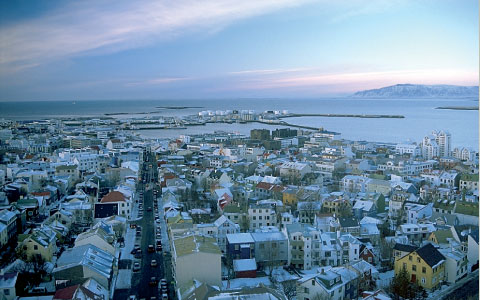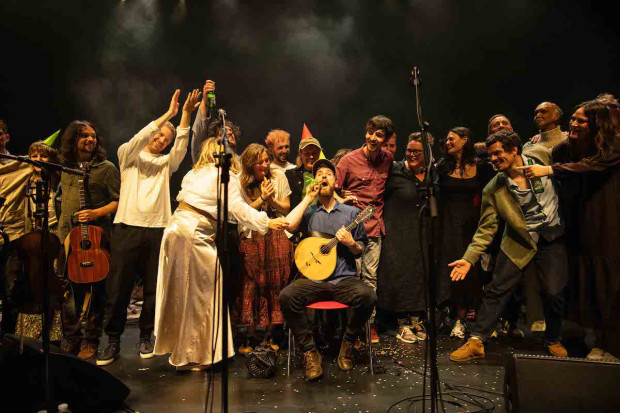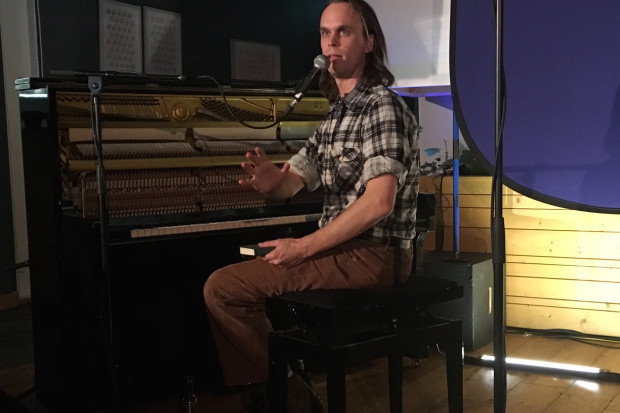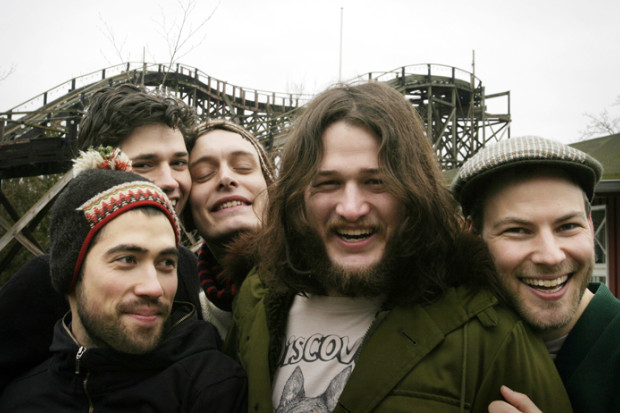
Music and Meltdowns
There are a few myths that need dispelling about Iceland. Firstly, the country is not permanently coated with ice – that’s Greenland. Secondly, the country is not overrun with elves. They exist, as do gnomes, dwarves and land sprites, in the country’s still-pervasive folklore, but they’re hidden to anyone lacking serious psychic abilities. Thirdly, Björk is not the Prime Minister of the country – she’s just one of the greatest cultural ambassadors Iceland ever had.
But maybe you’ve never heard of such fables. After all, the last two or three decades have seen the country undergo a fairly radical image-change, from remote, cod-producing North Atlantic outpost to urbane European hotspot, to one of the countries worst hit by the current economic recession. Nonetheless, Iceland’s visitor numbers have been escalating steadily for the best part of twenty-five years, as outsiders discover a country rich in weekend debauchery, geothermal hot pools and soaring glaciers – all within easy reach of the diminutive capital, Reykjavík.
There are many reasons why the country, and Reykjavík in particular, earned a reputation as a hip destination, but music certainly played a major role. It’s no coincidence that up until recently the Icelandic Tourist Board website had a section devoted exclusively to Björk. They, and the rest of the country’s marketing infrastructure, are only too aware that all the interviews with the elfin chanteuse and the seemingly endless flow of talented innovators that have followed in her wake have helped draw attention to Iceland’s myriad charms.
For a geographically isolated country with only 320,000 inhabitants, it has produced a disproportionate number of internationally appealing acts over the last two decades. The soundtrack these artists have created is notable for its high levels of innovation and an often leftfield approach. No one can be said to sound quite like Björk, and the same can be said for múm, The Sugarcubes, Ólafur Arnalds, Emilíana Torrini, Valgeir Sigurðsson, Mugison, Sigur Rós, Minus and many other diverse artists on the scene. Certainly, none of these acts sound anything like each other: múm’s coruscating fairytale worlds, Sigur Rós’ epic, quasi-religious rockscapes, Mugison’s wayward laptop-blues and Emilíana Torrini’s quirky pop – all are worlds apart, linked only perhaps by a desire to sound original.
Theories abound as to the reasons for the island’s rich and varied musical output. It could be the isolation. It might be the location, caught between Europe and North America. Maybe it’s the transcendent landscapes, or the dark nights and cold winters forcing people inside studios and rehearsal rooms. Or perhaps it’s a legacy of the Viking past. The motto of Smekkleysa, the label formed and still run by members of The Sugarcubes, is, after all, ‘World Domination or Death!’
Iceland’s infrastructure has several key features that help make its music scene perpetually inventive. A low-level music industry – a necessity when you only have a maximum audience of 320,000 – means a lack of investment. This in turn provokes a fiercely DIY ethic amongst artists: Icelandic bands don’t just make music, they usually arrange everything from the manufacturing to distribution – which usually involves dropping copies each week into local record-stores-cum-social-hubs like 12 Tonar – as well as create their own artwork and organise live shows and tours.
Then there’s the fact that the alternative pop scene in Iceland only began a couple of decades ago. It was inaugurated with the (slightly belated in international terms) punk explosion and reached a peak with the worldwide success of The Sugarcubes in the late 80s and early 90s. The lack of ‘pop heritage’ means musicians can start from scratch without relying or drawing on previous (potentially clichéd) eras, as other scenes do. Additionally, the country’s geographical isolation means that influences come from both Europe and the United States, but are far enough removed to be kept at arm’s length if need be.
Perhaps the most important factor, however, is size. The tiny, close-knit community creates a uniquely creative environment. Bands routinely share studios, instruments and even members. Much of the ‘action’, certainly in terms of the alternative scene, takes place in a compact downtown area of Reykjavík known colloquially as ‘101’ after its postal code, a term immortalised by Icelandic film director Baltasar Kormakur in his ‘slacker’ movie 101 Reykjavík.
‘The whole scene is very interconnected,’ comments twenty-one-year-old musician Ólafur Arnalds, whose mellifluous mix of classical, electronica and ambient sounds can be heard on his debut Eulogy For Evolution. ‘In my opinion [this] encourages people to do more. Support from the government and other parties then helps to get people’s work out there and helps the musicians continue what they are doing,’ says Arnalds.
‘We’re such a small country, everybody knows someone that’s making a living by doing music,’ avers Mugison (aka Örn Elías Guðmundsson), whose latest album Mugiboogie has been making waves internationally. ‘My grandmother knows people that are related to Sigur Rós. Parents know that if their boy or girl is playing guitar in their room it’s just as good as them studying economics, sociology, programming or whatever. We’re lucky to have role-models like Björk, Sigur Rós, Gus Gus and Emilíana, as they’ve proven to the whole nation that it’s possible to make a living with music. Another strength is that the scene has no class division. Myself and Björk don’t have special access to any clubs. If you want your song to be played on national radio you can just look in the phone book and call the DJ.’
A helpful and perhaps unusual aspect of Icelandic culture is the way in which music is generally viewed as a benevolent and positive pursuit. There are around eighty music schools in Iceland, with around 12,000 students from across all social strata. Support from the government and official organisations is buoyed by general encouragement from parents and families. Indeed, many parents are musicians themselves. ‘In Iceland the majority of children attend music school and everyone has to attend mandatory music education at least once a week in elementary school,’ explains Arnalds. ‘I believe music education at an early age helps children develop and makes them smarter. I guess our government just realises that this is important.’
‘The music education here is much better now than it was twenty or thirty years ago,’ states Tómas R. Einarsson, who specialises in jazz and Latin music. ‘There are more possibilities and the teachers are better qualified. New laws in 1975 helped a lot, when the state and the municipalities became responsible for paying the wages of the teachers of music schools, but for the jazz community, the foundation of the FIH Music School in 1980 was the turning point. It gave a small jazz community a centre where interested young musicians could come and learn and jam with other youngsters that wanted the same. It also meant that jazz musicians and teachers could earn a living teaching and playing.’
Iceland’s domestic music scene is less known to tourists, but important for the country’s overall economy. More than 200 titles are released annually covering all kinds of styles from classical and folk to indie rock and pop. CD sales reach approximately 700,000 to a million units annually and 55% of the albums sold are by Icelandic artists. The dominant industries in Iceland remain fishing and aluminium production, but CD sales make up 1% of the GNP. Yet how to separate the reality from the hyperbole?
‘There seems to be a strong desire to project a pretty image of the music scene here,’ says Bedroom Community boss, producer and sometime Björk collaborator Valgeir Sigurðsson. ‘Yes there are lots of people making music, but Iceland is far from being a government-funded utopia for musicians. There is a certain fearlessness in the musicians here, which I think has got to do with a lack of tradition and musical heritage, and also that music is a cottage-industry here so it’s all about being self-sufficient.’
Despite this active industry and the official support if gets, there are criticisms. ‘I think the system is too slow and discouraging for up and coming acts,’ claims Mugison. ‘The government needs to focus on infrastructure back home, and abandon some rules and regulations that have made it very hard for young acts to play and make some money. Artists have to pay lots of money to the police and to the publishing company to play a gig for ten friends, which is what bands need to do at least 200 times if they are to be any good. But now nobody is playing because it’ll just get them in trouble. We pay 7% VAT on CDs but we need to pay 24.3% on digital downloads, which is not fair. The governing body and publishing company, STEF [the MCPS and PRS equivalent], is out of touch when it comes to supporting young acts. It only supports its old establishment. I feel they’re scared of the youngsters, just like my grandfather was scared of the computer a few years ago.’
‘So far they have actually seemed to do more about exporting the music than developing the music scene within Iceland,’ admits Arnalds, ‘apart from the classical scene of course, which always seems a bit privileged. [The government] hasn’t been very willing to support local live venues, but recently the Kraumur music fund was started, and part of its purpose is to help musicians tour Iceland instead of always concentrating on going abroad.’
Arnald’s comment on the classical scene being ‘privileged’ is echoed by many across the scene. While the country is best known for its rock and pop exports, it has a strong classical tradition with composers such as Jón Liefs (1899–1968) and current stars such as crossover artist Cortes and the avant-gardist Hugi Guðmundsson, whose Apocrypha project recently received the coveted Icelandic Music Award. Guðmundsson is also co-founder of a new web-project called MusMap.com, a network of classical musicians and composers looking for private sponsorship.
‘There has always been more government funding of classical music than other genres, that is absolutely true,’ admits Guðmundsson. ‘To a degree, that is understandable and necessary. Classical music requires much longer and [more] intense education and training than other music genres. Composing “written music” for classical instruments requires craftmanship that is based on a very long tradition. This is a cultural heritage that many governments have chosen to preserve, even if it’s not reflected in popularity ratings. That being said, too much government funding, or the wrong type, can be very harmful and, in my opinion, has contributed to the image of classical musicians and composers being in an ivory tower looking down on all other music… I think there needs to be a balance between government and private support for all music. It’s very important for the future of classical music that the private sector gets more involved, not just from a financial viewpoint but also to get people more aware of what is happening in the genre.’
While there have been no serious government cuts in music funding to date, an anticipated 5–15% cut for music schools is anticipated later this year. The current economic catastrophe will of course create its own financial re-shuffles and subsequent solutions. ‘I think it’ll have many very positive affects,’ says Mugison. ‘It will force people to be creative in the way they reach out to people, whereas before it was heavily sponsored by banks and big corporations. Now artists have to talk directly to the people of the country, not the elite, to make things happen. Like all conflict, it will bring people together. For some, there will be more devotion to ideology and creativity rather then being a big success. The other day I sang two songs on an album for a friend and in return he’s going to play double bass on my next album. I love that stuff and I think we’ll see a lot of that happening – people working together and sharing time and effort.’
Iceland’s traditional music scene remains small and largely unexploited. A smattering of dedicated musicians and vocalists help keep the traditions alive, including Steindór Andersen, (his sister) Rósa Jónsdóttir, Njáll Sigurðsson, Bára Grimsdottir and resident ex-pat Chris Foster. ‘Unlike the rest of Europe and North America, Iceland hasn’t seen the growth of a folk, world or roots music scene over the past fifty years,’ says Foster, ‘so there isn’t a functioning network or recognisable spread of venues around the country. In terms of public awareness, there isn’t much. At a basic level people know vaguely about traditional songs, but it tends to be a very small selection that gets “done to death”.’
Foster and Grimsdottir have been particularly actively teaching in schools and arts academies, but, he says, ‘there is a general shortage of music teachers in schools here and I think it would be fair to say that among school music teachers there is a fairly low level of knowledge about, or interest in traditional music. As far as we’re concerned, the bottom line is that Iceland possesses a unique and rich tradition of songs with some fantastic melodies and they really need to be out there getting heard and enjoyed much more than they are at the moment, both here and abroad.’
Iceland doesn’t have a vast musical legacy. Its oldest and most consistent musical tradition is based on the voice. Rimur, a form of chanted poetry, can be traced back to the original Viking settlers and is still practised today by elderly farmers and fishermen and by a special rimur society established to keep the tradition alive. Due to the country’s isolation from other cultures, a lack of imported musical instruments and a slightly draconian rule by the Danes, a folk music scene, although certainly extant, never managed to fully flourish; neither did the classical music scene until late.
Rimur is linked back to the poetry of the ancient skalds. Along with the old Saga literature, this poetry was abandoned in Scandinavia (where it originated) but continued in Iceland. Thanks to its rich history of rhymes and Sagas, Iceland has become known as a literary, rather than a musical nation. Land of literature and poetry Iceland may be, but it is has fast become a nation of music too.
‘Icelandic culture is based on the Sagas,’ concludes musician and producer Vidar Hakon Gislason, formerly of the band Trabant. ‘If you want to know how Icelandic people think and how things work around here, read the Sagas. This is our gold.’
Published on 1 April 2009















